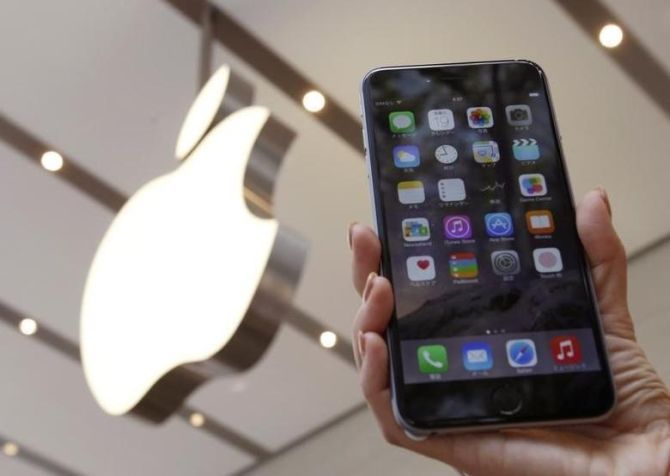Recently, Apple did two things differently. First, it entered video streaming sector with cheaper options and second it has opened up its OTT service for non-Apple users too.

Apple Inc has always positioned itself at the premium end of the market.
But recently, the $ 265 billion Silicon Valley giant surprised consumers by doing two things differently.
First, it declared a war on video streaming platforms by announcing the launch of Apple+ globally at a lower than usual subscription rate.
At just Rs 99 a month in India, it will be cheaper than Netflix’s Rs 199 a month on digital and Rs 650 a month on TV, or even Amazon’s Rs 130 a month.
Second, Apple is opening up its over-the-top (OTT) channel to a larger audience - not restricted to Apple device users alone, as it has done with its music app iTunes.
Yet to keep potential Apple device buyers happy, it has not only dropped the price of its entry-level iPhones, but is also offering free OTT service for a year.
The addressable market that Apple is aiming at is as big— if not bigger - than other OTT biggies.
It includes smart and non-smart TV users as well as non-Apple smartphone and digital consumers who are not on i0S.
To this end, it has tied up with TV giant Samsung - which is ironic given the fierce court case the two fought over patents just two years ago - and for new smart TVs with Sony and LG, which will be powered by the Apple+ app.
It has also signed a deal with its competitors who sell Amazon Fire Stick, which helps convert non-smart TVs into smart TV, by offering it as one of the choices on its platform.
Will these moves make Apple a serious OTT player to reckon with - especially given the 35-odd players competing aggressively for consumer attention?
According to Consumer Electronics and Appliances Manufacturers Association, in 2018, 15.5 million TV sets were sold and half of them were smart TVs.
And with 95 per cent of Indian homes having single TVs, the addressable TV household that Apple could potentially tap is about 4 per cent of the 197 million households that have a smart TV.
This, of course, does not include millions of others who could convert their non-smart TVs into smart via the Fire Stick or via the browser on their smart TVs.
Similarly, there are over 500 million smartphone users (including around 11 million Apple device owners) who can view the OTT channel though either their browser or mobile app, if they have an Apple device.
In many ways, it’s the market that most OTT players also want or are already tapping for viewers and subscribers.
Opinion is divided on whether Apple could disrupt the market.
Companies such as Netflix believe that the Indian market is vast and there are opportunities for everyone to grow.
A CEO of one of the country’s largest broadcaster and a key OTT player says: “Apple’s programming will be primarily in English. And in India, the viewership of English programming is only 1 per cent in OTT.
"So in a market of 300 million active OTT users per month, you are looking at not more than a 3 million addressable market.
"To survive in India low pricing and addressing the mass market with regional programming is the only key to make money.
"Their entrance will not make a whimper.”
He has a point: Even Netflix, despite the fact it has cut subscriptions to only Rs 199 on digital and has made substantial investment in regional programming, still has only 1.3 million subscribers, according to various estimates by agencies, and Amazon, despite being tied to benefits of free delivery, is at around 2.5 million.
The CEO also points out that the focus of Apple will be to use its large cash reserves to take on the might of Netflix, Amazon, Disney+ in the US, where it will be a bitter battle for supremacy.
They won’t at least in the near future divert resources in smaller markets like India and invest in regional programming.
The big boys of the game have been Hotstar (bought by Disney) which initially attracted viewers primarily by offering the content free.
The company, however, does not give out its paid subscriber numbers, but plans to increase subscription revenue share from 7-8 per cent to 50 per cent of total revenue in four years by pushing sports and it's original Hindi and regional content.
It will compete with Apple currently with Hotstar Premium, the English programming package which is priced at Rs 299 a month.
Yet many say competitors are underestimating their clout.
Says Rajiv Bakshi,CEO of Reliance Big Synergy, which makes OTT programming: “Apple TV+ is a game-changing strategy.
"To begin with, it will be a global product, ideal for its formidable and trend setting customers in India, but it would localise to market requirements in the near future.”
Apple has a bevy of original programming lined up and it plans to dub their originals in 40 different languages.
Many production houses say that they expect Apple to follow the same path as a Netflix - start with global programming and then move to originals made in India in regional languages.
They say that with their data and understanding of Indian customers they can easily focus on what audiences want.
So will Apple + help them in changing their lacklustre performance in the country? The US giant has been seeing a steep fall in shipments to India.
According to estimates, in 2018 the company’s sales dropped to half of 2017 sales at 1.7 million.
The number is likely to fall further in 2019 as it gets battered by high price and increasing Chinese competition.
One way Apple is tackling the challenge is by cutting prices.
It has slashed the price of entry level iPhone 11 launched last week by 16 per cent compared to the earlier XR variant.
But a mere cut in price, many analysts say, does not work as competitors follow suit.
Also most premium devices have no key differentiator in the product.
But by bundling its Apple+ with a free one-year subscription the company is trying to stand out.
“No other mobile manufacturer offers you OTT content of their own with a free subscription bundled with it,” says an analyst.
In India over 70 per cent of the usage of OTT channels is on mobile devices, especially amongst the youth, and compelling content on the channel, could help in driving its sales up.
But the question is whether the OTT channel will galvanise more buyers to buy Apple devices.
Photograph: Yuya Shino/Reuters












 © 2025
© 2025